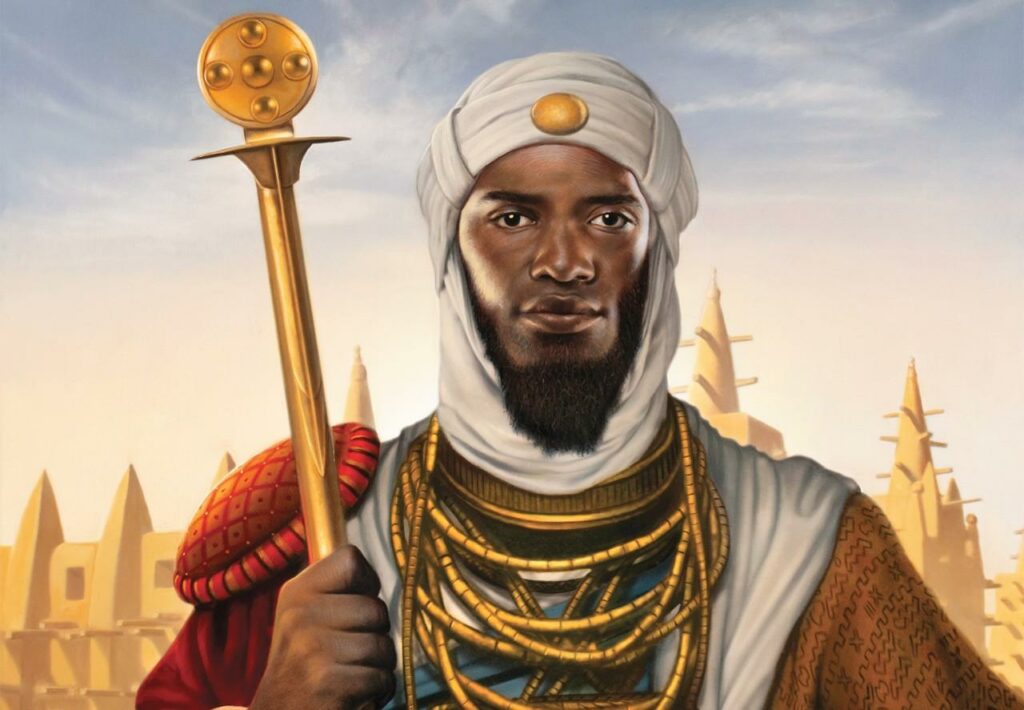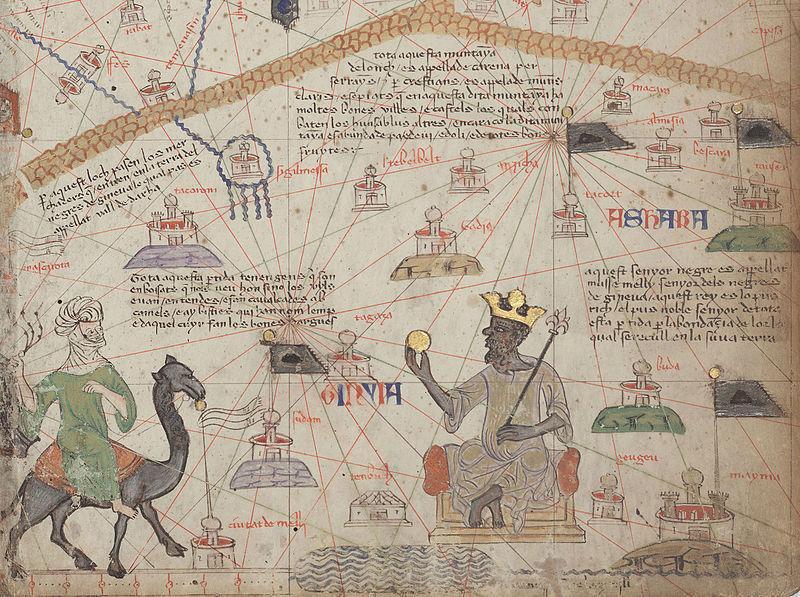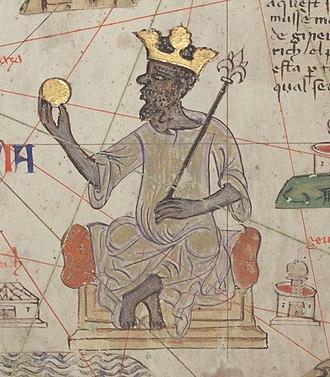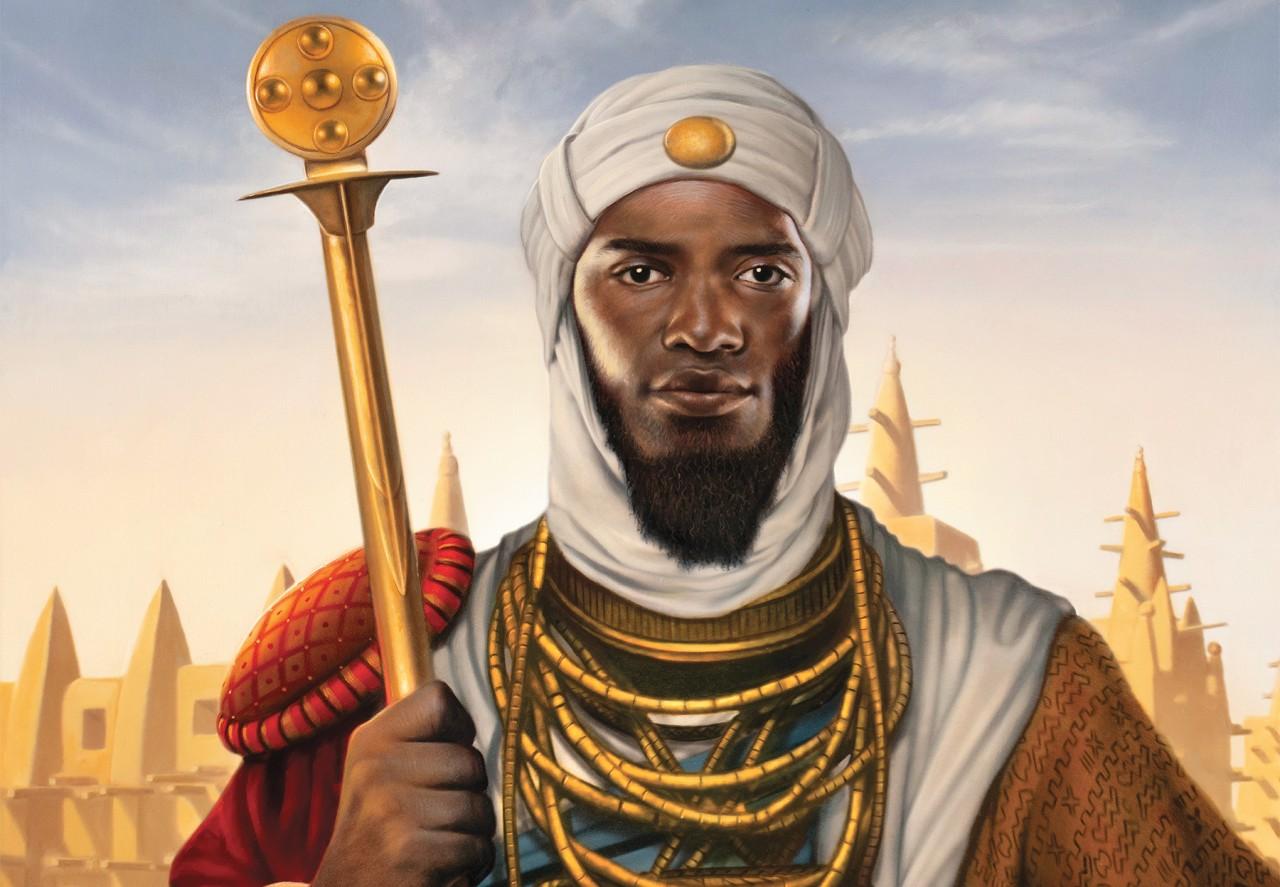Mansa Musa (Musa I of Mali) was the ruler of the kingdom of Mali from 1312 to 1337 when Mali was one of the richest kingdoms of Africa.
Mansa Musa developed the cities of Timbuktu and Gao into important cultural centres, bringing in architects from the Islamic world to design new buildings and turning the Kingdom of Mali into a sophisticated centre of learning.
1280
Between 1332 and 1337
Mali
The ancient kingdom of Mali spread across parts of today’s Mali, Senegal, the Gambia, Guinea, Niger, Nigeria, Chad, Mauritania, and Burkina Faso. The Arab historian Al-Makrizi (1364-1442) gives the following description of the king of Mali:
“He was a young man with a brown skin, a pleasant face and good figure…His gifts amazed the eye with their beauty and splendour.”
1312 – ascension to ruler
1324 and 1325 – pilgrimage to Mecca spanning 2,700 miles
1375 – included in the medieval map, the Catalan Atlas.
1337 – the Sankoré Masjid had been converted into a Madrasa (Islamic school, or university) with the largest collections of books in Africa since the Library of Alexandria.
Mansa Musa came to power in 1312 after the previous king was lost at sea.
Mansa Musa developed the cities of Timbuktu and Gao into important cultural centres, bringing in architects from the Islamic world to design new buildings, turning the Kingdom of Mali into a sophisticated centre of learning.
It is recorded that Mansa Musa travelled through the cities of Timbuktu and Gao on his way to Mecca, and made them a part of his empire when he returned around 1325. He brought architects from Andalusiain Spainnand Cairo to build his grand palace in Timbuktu, and the great Djinguereber Mosque that still stands today.
Timbuktu soon became a centre of trade and culture, and a university was founded in the city, making Timbuktu a new area for Islamic scholarship. News of the Malian empire’s city of wealth travelled across the Mediterranean and traders from Venice, Granada, and Genoa added Timbuktu to their trade maps.
In 1330 the kingdom of Mossi invaded and conquered the city of Timbuktu. Musa regained Timbuktu andbuilt a rampart and stone fort with a standing army to protect the city from future invaders.
While Musa’s palace has since vanished, the university and mosque still stand in Timbuktu today.
By the end of Mansa Musa’s reign, the Sankoré University had been converted into a fully staffed University with the largest collections of books in Africa since the Library of Alexandria. The Sankoré University was capable of housing 25,000 students and had one of the largest libraries in the world with roughly 1,000,000 manuscripts
Mansa Musa inherited a kingdom that was already wealthy, but his work in expanding trade made Mali the wealthiest kingdom in Africa. His riches came from mining significant salt and gold deposits in the Mali kingdom. Elephant ivory was another major source of wealth.
Mansa Musa died in 1337 and was succeeded by his sons. Mansa Musa remained engrained in the imagination of the world as a symbol of fabulous wealth as well as for his Islamic faith, promotion of scholarship, and patronage of culture in Mali.
When Mansa Musa went on a pilgrimage (hajj) to Mecca in 1324 his journey through Egypt caused great excitement. The kingdom of Mali was relatively unknown outside of West Africa until this event. Arab writers from the time said that he travelled with an entourage of tens of thousands of people and dozens of camels, each carrying 136 kilograms (300 pounds) of gold. While in Cairo, Mansa Musa met with the Sultan of Egypt, and his caravan spent and gave away so much gold that the overall value of gold decreased in Egypt for the next 12 years. Stories of his fabulous wealth even reached Europe. The Catalan Atlas, created in 1375 by Spanish cartographers, shows West Africa dominated by a depiction of Mansa Musa sitting on a throne, holding a nugget of gold in one hand and a golden staff in the other. After the publication of this atlas, Mansa Musa became a figure of stupendous wealth in the global imagination.
https://www.youtube.com/watch?v=O3YJMaL55TM&t=16s
Mansa Musa: The Richest Man Who Ever Lived (indiatimes.com)
Mansa Musa (Musa I of Mali) | National Geographic Society
How Mansa Musa Became The Richest Person In History (allthatsinteresting.com)
Mansa Musa – Wikipedia
Mansa Musa I – World History Encyclopedia





